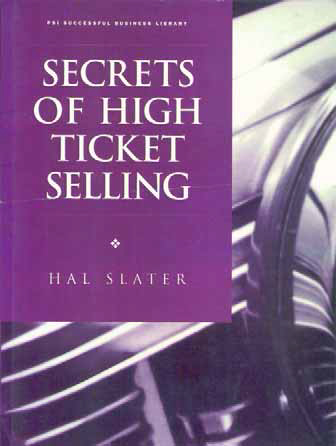Just the Ticket

There are those in this business who are extremely adept at selling, and I’m definitely not one of them. I get by, but it’s never been my long suit by any means.
I’ve always admired the good salespeople I’ve met, and I fully accept the hard reality that to build a watershape at any level, one must sell it first. But I came up on the design/construction side of the watershaping business, and I’ve never found a clear way past the fact that, for me, sales has always been an area where I consistently have plenty of room for personal growth and improvement.
I know that selling is important not only because it brings business through the door, but also because it sets the stage for everything that follows as a project progresses. As practiced by real professionals, I’ve observed that it’s much more about building a rapport rather than about extracting dollars or getting a client to sign on the dotted line.
Always on the lookout for resources that will help me sharpen my sales skills, I beive I found a good one in Secrets of High Ticket Selling by Hal Slater (Oasis Press, 1998). A pool builder based in San Diego, Calif., Slater has established a solid reputation for sales training, both inside and beyond the watershaping trades. He’s given hundreds of seminars on sales-specific topics and conducts a sales-training school for the industry called the Millionaire Pool Builder Program.
With experience as both a sales trainer and custom pool builder, Slater is perhaps uniquely qualified to speak to the challenge of selling watershapes. As he points out, these are often high-ticket transactions that require an approach that is (or at least should be) more refined and sophisticated than more basic types of sales.
The book a quick read at 117 pages, but it’s full of clear, concise information that I personally found to be quite helpful. He spends a lot of time on the value of understanding the client, covering the power of asking questions, listening and reading responses. There’s also good advice about closing sales and a range of subtle techniques intended to pull clients down off the fence and get a project moving. (I found this particularly helpful in that the prospects who eat up a disproportionate amount of my time are those who are “undecided.”)
Slater writes at length about techniques for (and the power of) building a sound relationship with prospective clients and ways of avoiding awkward or transparent overtures to a close. This hit home with me in a big way because I think most of us have been subjected to salespeople who’ll comment on pictures of the kids on the mantelpiece, for example, as a way of expressing a superficial interest in you. Slater explains – and correctly, I believe – that clients see right through the sham and offers advice about making connections that never seem either forced or contrived.
As helpful as Slater’s little book is, I’d have to say that it’s probably not for everyone. If your business is about volume, for example, his approach is probably too subtle and certainly too time-consuming. But if you work with lots of mid- to high-end clients and quality is your trademark, then Slater’s rapport-based approach to top-level selling may be just the ticket for you and others in your company.
Mike Farley is a landscape designer with more than 20 years of experience and is currently a designer/project manager for Claffey Pools in Southlake, Texas. A graduate of Genesis 3’s Level I Design School, he holds a degree in landscape architecture from Texas Tech University and has worked as a watershaper in both California and Texas.










